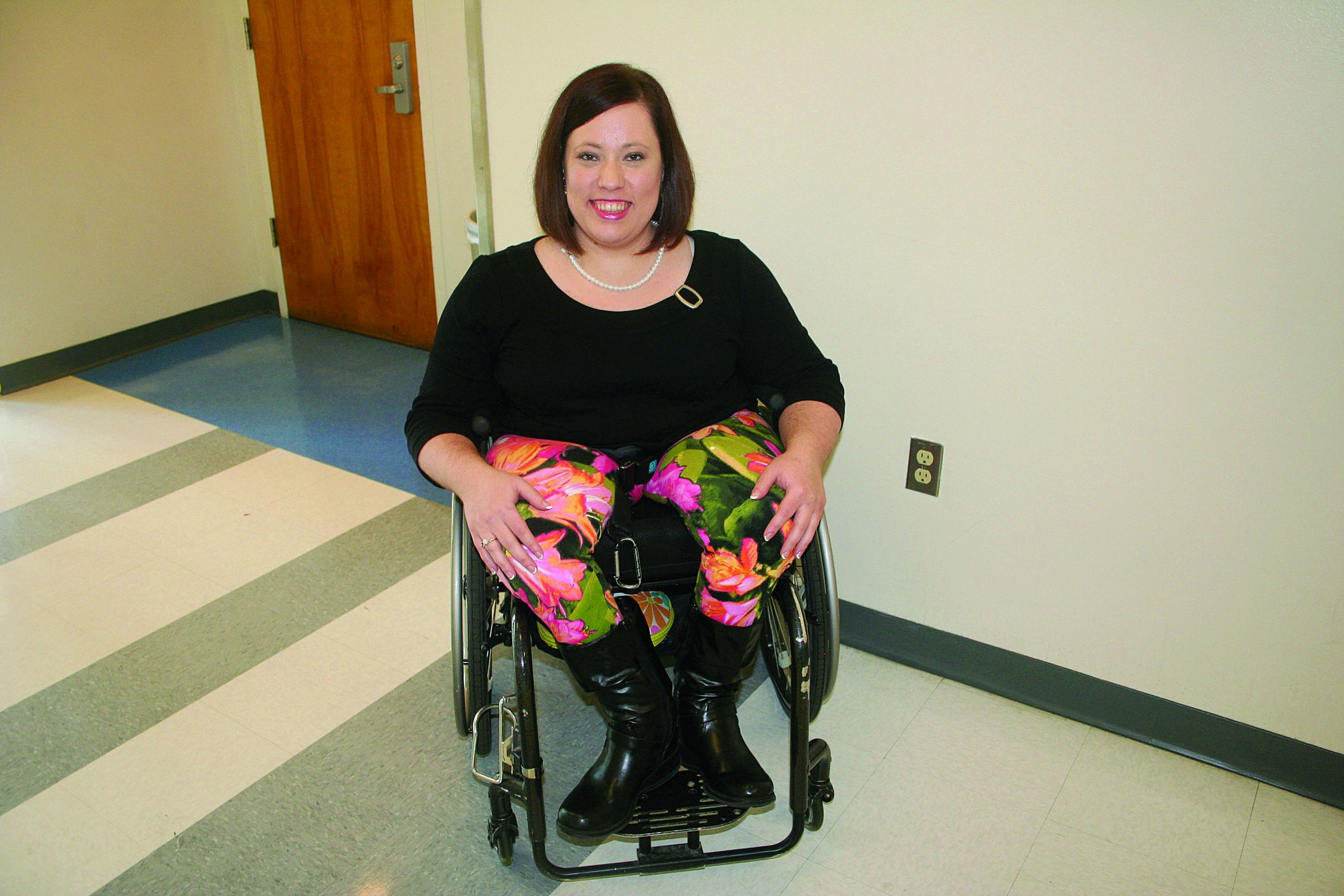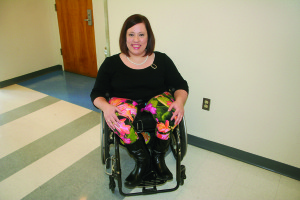
This week’s guest column is by Sophia Sanford, senior at Georgia State.

October is Spina Bifida Awareness Month. Typically, when people think of the month of October, they think of Halloween. Though October is the same month as Halloween, I always thought about spina bifida awareness in conjunction with Halloween.
Growing up, I always enjoyed the yearly tradition of either designing a poster about my experience with spina bifida or giving a short presentation about my experience with the disability to my fellow peers.
My name is Sophia Sanford. I am a vibrant, intelligent 25-year-old with spina bifida. You may have seen me speeding around campus in my wheelchair or you may have been the person who stopped to assist me up those impossibly steep ramps in the courtyard (Thanks!).
I have received many questions about my disability and I have heard every assumption under the sun. With this article, I hope to clear up every question you’ve ever had about spina bifida.
The facts
According to the Centers for Disease Control and Prevention, each year 1,500 babies are born with spina bifida. There are approximately 166,000 people in the United States living with spina bifida. It is also the most common physical disability.
Myelomeningocele occurs when the bones in the spinal column do not completely form. Myelomeningocele is the most common and most severe form of spina bifida and it is my diagnosis. My spine did not develop correctly resulting in a small opening in my back and a portion of my spinal cord outside my skin. With a single surgery, it was put back in — but I have paralysis from lumbar to thoracic level.
A secondary condition that 80 percent of people with spina bifida have is called hydrocephalus. Hydrocephalus is when there is excess cerebrospinal fluid in the ventricles of the brain which presses against the skull. To relieve the pressure on the brain and skull, a small catheter called a shunt is put in place to drain the fluid. A person with hydrocephalus will have many shunt revision surgeries due to complications with the shunt’s function.
The shunt can cause some or all of the following learning issues such as spatial problems which effect the ability to read and interpret graphs, maps and charts, poor hand-eye coordination which can make hand writing illegible, make catching anything in the hands almost impossible, problems with dexterity, learning disabilities occur in either reading or mathematics, missing or misinterpreting social cues and severe memory problems.
Some also struggle with bowel and bladder issues due to little or no sensation in the lower part of the body. There is also a commonality to Latex allergies. There is no explanation as to why people with Spina Bifida have different reactions to Latex. Reactions range from mild skin irritation to extremely life-threatening. So, never approach a person who has Spina Bifida with a latex balloon or latex gloves.
What causes spina bifida?
So, how do you get spina bifida? The true cause is not known. The medical community will tell expectant mothers it is either environmental or genetic. They blame a lack of folic acid as one environmental cause. In my situation, it may be contaminated ground water. I was born in an agricultural area of Florida. My home was surrounded by orange groves, crop dusting and our home used well water.
Recently, residents of Washington State experienced a surge in the number of spina bifida births. This is also a highly agricultural area. Another highly agricultural area which experienced a surge of spina bifida births is Brownsville, Texas.
The bottom line, no chamber of commerce wants their community to receive this label. This would be economically devastating. It is easier to blame a lack of dietary supplement.
As for genetic causes, it takes both the mother and father to possess a defective gene. There are high rates of spina bifida births in communities such as Wales, England because families tend to stay in the same communities.
Living with spina bifida
Individuals with spina bifida face numerous health problems and many hospital stays, but that doesn’t stop any of us from living as best we can. Just like any other child, at certain ages, milestones are expected and attained. Spina bifida children may take longer or require different steps to reach goals.
For me, instead of learning to walk, I learned to put on and walk in braces with a walker. It was slower and mechanical-looking, but necessary. I played soccer from a wheelchair and had to learn to open heavy doors from a seated position. With navigation issues, directional signs were placed high on walls at every school to assist me in getting where I needed to go.
You may have seen my signs at Georgia State as well. I learned to dress and care for myself at age seven after attending an independence camp. Today, the laundry is still my responsibility and I am helped by front-loading machines. I reach items high on shelves with the use of a grabber. I can also cook and bake for my family. I am okay with that.
I am not someone who hates my disability or wishes it would disappear. I have accepted and embraced my disability and my circumstances. Pity from others or comments or questions as to whether I hate my life or whether my parents grieve about not having a normal child are extremely offensive. My parents have fought for me, accepted me, loved me, encouraged me and taught me to be independent. They have also taught me to advocate for myself.
Having spina bifida is not an easy feat. However, I believe having the right attitude makes all the difference. I want others who may not be aware to learn about spina bifida and to have a better understanding of those who live with it. We don’t have easy lives but we are happy individuals who have accepted ourselves. It’s time for the world to catch up with us and accept spina bifida too. All we want is a better quality of life.
I encourage everyone to educate yourself about spina bifida this October.
For more information about spina bifida or to volunteer with the national Spina Bifida Association, please visit www.spinabifidaassociation.org. Happy Spina Bifida Awareness Month!

Wales isn’t in England! Wales and England are both countries in the United Kingdom (along with Scotland and Northern Ireland, which also have high incidences of Spina Bifida).